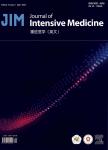Hemodynamic monitoring in cardiogenic shock
Hemodynamic monitoring in cardiogenic shock作者机构:Service de Médecine Intensive RéanimationHopital Robert DebréUniversitéde ReimsReims 51092France UnitéHERVIHémostase et Remodelage Vasculaire Post-IschémieEA 3801Reims 51092France Médecine Intensive RéanimationH?pital Universitaire de PoitiersPoitiers 90577France INSERM CIC 1402(ALIVE Group)Universitéde PoitiersPoitiers 90577France
出 版 物:《Journal of Intensive Medicine》 (重症医学(英文))
年 卷 期:2023年第3卷第2期
页 面:104-113页
核心收录:
基 金:This research did not receive any specific grant from funding agencies in the public commercial or not-for-profit sectors.
主 题:Echocardiography Cardiogenic shock Hemodynamic monitoring Pulmonary artery catheter Transpulmonary thermodilution device
摘 要:Cardiogenic shock(CS)is a life-threatening condition characterized by acute end-organ hypoperfusion due to inadequate cardiac output that can result in multiorgan failure,which may lead to death.The diminished cardiac output in CS leads to systemic hypoperfusion and maladaptive cycles of ischemia,inflammation,vasoconstriction,and volume overload.Obviously,the optimal management of CS needs to be readjusted in view of the predominant dysfunction,which may be guided by hemodynamic monitoring.Hemodynamic monitoring enables(1)characterization of the type of cardiac dysfunction and the degree of its severity,(2)very early detection of associated vasoplegia,(3)detection and monitoring of organ dysfunction and tissue oxygenation,and(4)guidance of the introduction and optimization of inotropes and vasopressors as well as the timing of mechanical support.It is now well documented that early recognition,classification,and precise phenotyping via early hemodynamic monitoring(e.g.,echocardiography,invasive arterial pressure,and the evaluation of organ dysfunction and parameters derived from central venous catheterization)improve patient outcomes.In more severe disease,advanced hemodynamic monitoring with pulmonary artery catheterization and the use of transpulmonary thermodilution devices is useful to facilitate the right timing of the indication,weaning from mechanical cardiac support,and guidance on inotropic treatments,thus helping to reduce mortality.In this review,we detail the different parameters relevant to each monitoring approach and the way they can be used to support optimal management of these patients.



